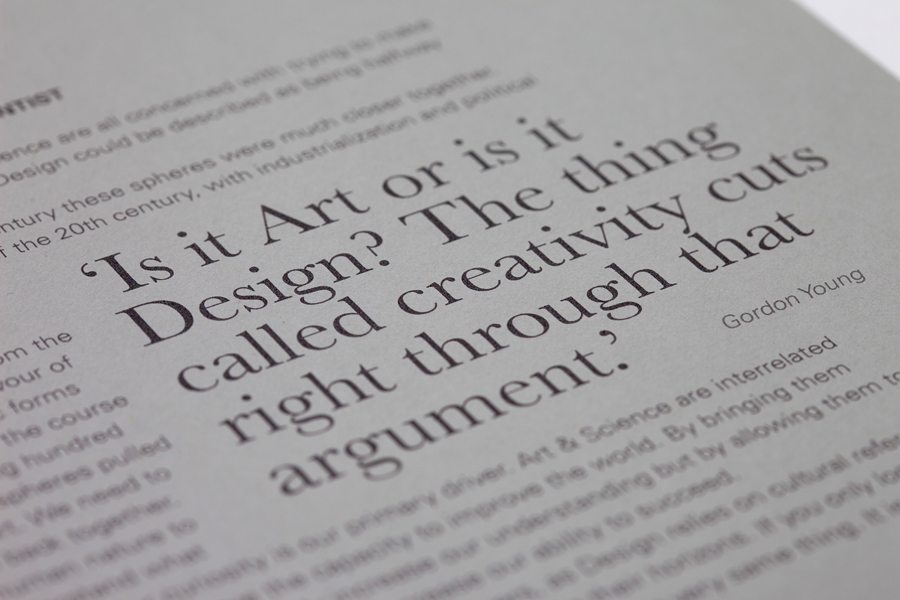Research project on Design Direction.


"This is not a Manifesto, it is a statement of intent. It is not about what I have done, it is about what I propose to do. After all, my intentions are far more interesting than my achievements to date. I don’t need a business card for what I’ve already done, but I need one for what I want to do. My Design Direction is motivated by purpose, opposition & self-initiated reform. Comprenhensive & appropriate."
_


Be an Artist, Designer & Scientist
The spheres of Art, Design & Science are all concerned with trying to make sense of the world around us. Design could be described as being halfway between Art & Science.
At the end of the 19th century these spheres were much closer together. It was in the early period of the 20th century, with industrialisation and political upheaval, that saw many key representatives of the avant-garde position themselves away from the sphere of art, in favour of various pragmatic forms of design. Over the course of the following hundred years these spheres pulled further apart. We need to pull them back together.
It is human nature to try to understand what is around us. Our curiosity is our primary driver. Art & Science are interrelated because they both have the capacity to improve the world. By bringing them closer together we not only increase our understanding but by allowing them to react with each other we also increase our ability to succeed.
Designers need to be good observers, as Design relies on cultural references, therefore it is vital for designers to open up their horizons. If you only look at one sphere then your output will always result in the very same thing. It is important to continually move your points of reference.
‘Is it Art or is it Design? The thing called creativity cuts right through that argument.’ Gordon Young
_


Define the purpose
Art’s role is sometimes defined simply as 'raising a question', whereas the role of design is seen to be to provide answers. When viewed as just a problem solver, the designer is not in a position to define the purpose. Only by creating new opportunities or initiating projects can a designer reposition themselves away from working in accordance with commission.
'Practice has shown that the work of true artistic worth can be created only when the artist sets his own objective (the internal social commission).' El Lissitzky
_

Think comprehensively
We can characterize the way people think using these terms borrowed from evolutionary biology, you are either a lumper or a splitter. Lumpers will tend to look at a problem holistically while splitters try to pick apart the smallest detail. There is no right or wrong way, it is possible to make breakthroughs in our understanding of the world either way. However if you do not know which one you are, it is probably a good idea to work it out. Being a lumper is about joining the dots and thinking comprehensively, this is the type of thinking that exists between the spheres of Art & Science.
'I refuse to treat diverse subjects as specialized areas of investigation, because it inhibits my ability to think intuitively, independently, and comprehensively.’ Buckminster Fuller
_


Use all modes of expression
Human Intelligence begins with conception; it is our prime mental activity. A concept is only fixed when it is embodied in a symbol, It is the culmination in some form of symbolic expression that we as designers need to understand and explore. We must learn the various modes of expression ie; language, myth, audible, artistic, mathematical etc. It is in the difference between the concept and the symbol that we find the grey area, this difference is where we find the poetry.
‘The magic of the concept and the charm of the real.’ Jean Baudrillard
_